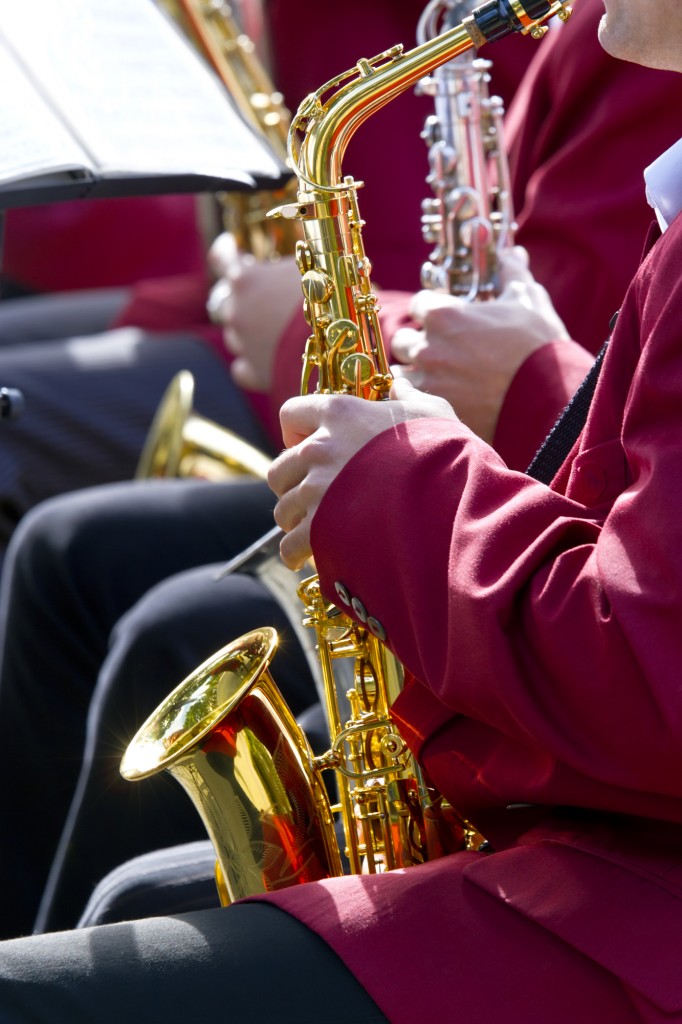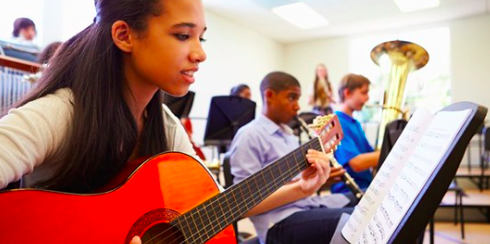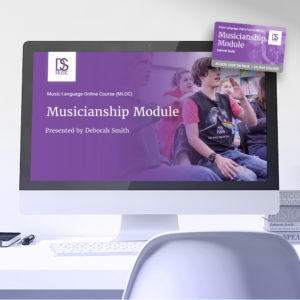Top 6 Ways Solfa Can Help You With Music Performance
Comments Off on Top 6 Ways Solfa Can Help You With Music PerformanceWhile we all know that becoming truly musically literate — which is the aim of the game here at DSMusic — lends itself quite well to improving our musicianship and theory skills, all that do re mi also actually applies to the practical side of things too.
That’s right! Solfa isn’t just for when you’re panicking about an upcoming aural and written exam, it’s a really great go-to for strengthening a number of practical capabilities we use as musicians and performers.
Join me as we go through some strategies for incorporating solfa in your lessons, practice sessions and rehearsals, helping link music language and literacy with music making in a meaningful and relevant way.

DEB’S TOP 6 WAYS TO SUPERCHARGE YOUR PRACTICE WITH SOLFA!
1: Sound production & tone.
When supporting students in the early stages of their learning, we try to ensure they have an auditory reference for what a good sound is on their instrument. This might be a recording or another musician, or yourself as the teacher demonstrating for them. In these cases they are using the tools they have — embouchure, diaphragm support, finger placement etc. — to match what they’re hearing. Having them sing the note, sound or tone in solfa before trying to realise it practically is an immediate means for this.
2: Hitting the mark.
Producing a good sound or tone is great for notes played sequentially in a scale, but as we’re aware, music performance requires control and precision across the spectrum. Most instruments have to face a change in register, octave, harmonics or position and, depending on the difficulty of this, students could be taking small interval steps or large leaps. As mentioned by Steenstrup et. al, 2021, using solfa to sing these can help improve pitch accuracy.
3: Intonation.
Singing and hearing the pitch you’re aiming for is one thing, certainly, but solfa is also useful for the stability and accuracy of that note once you arrive. Is your ensemble struggling to play that held chord in tune? Perhaps the climactic note at the end of a phrase is edging out of the stratosphere somewhat? No problem — get your students to pop down their instruments for a moment and use solfa to sing the chord or final note instead. It’s remarkable how so simple a strategy (and reminder!) can make a huge difference on the overall intonation of the group.
DSMusic Top Tip: Make Singing An Integral Skill – Just Like Practice!

4: Muscling up memory.
Not only is memorisation itself a great practice tool for musicianship generally, it’s also a skill fostered in the actual doing of practice. By that I mean singing scales or pieces/repertoire for music performance in solfa supports memorisation more than if you just listen to a recording or look over the notation. That’s because you’re actively engaged, and consciously aware of the actual notes when you’re singing, independently of the practical challenges that may arise while you’re still learning that tricky bar, phrase or section on your instrument.
5: Solfa sectionals.
How often in ensemble rehearsals, sectionals, lessons or practical classes, do we find ourselves working with a particular section or student while others wait? Get those students to sing their parts in solfa (using inner hearing) like you would encourage ‘shadow playing’ or ‘silent practice’. This will give them something engaging and useful to do while you’re off tuning timpani or working out what’s wrong with the bass guitar amp and it might even improve their musical expression.
6: Strengthening sight reading.
When sightreading for music performance we apply all the previous strategies. Combining solfa with the act of inner hearing provides audio imagery — that is, being able to see what you hear and hear what you see. There’s often a really close connection between what we’re doing vocally and what needs to happen physiologically on our instrument, particularly if we’re playing brass or woodwind. Solfa sets the scene!
How can DSMusic resources support you?
The best resource for practicing solfa and the skills we’re talking about today is the Music Language Online Course Musicianship Module. It’s got sequential activities across all concept areas and a predominantly aural focus, scaffolding inner hearing and memory too.
In a 1:1 lesson context, work through the activities (10 weeks x 7 days worth!) together, or set for home practice. Wondering how this resource might work in your rehearsal setting? Have the ensemble director use the online course access to kick-start sessions and fine-tune during sectionals with solfa, singing, clapping, conducting and more!
And remember…
Even if your lesson or ensemble isn’t vocal-based (like singing lessons or choir rehearsals) doesn’t mean you can’t intentionalise vocalisation alongside music language and solfa. After all, music performance is the opportunity to take what we really know and apply it in a practical setting to express ourselves and share the magic!
Happy practicing, everyone! – Deb
Steenstrup, K., Trusbak Haumann, N., Kleber B., Camarasa C., Vuust P., Petersen B. (2021). Imagine, Sing, Play- Combined Mental, Vocal and Physical Practice Improves Musical Performance. Frontiers in Psychology Volume 12: https://doi.org/10.3389/fpsyg.2021.757052
Kageyama, N. (2023). Why Singing Could Enhance Your Daily Practice. Bulletproof Musician Blog: https://bulletproofmusician.com/singing-out-loud-embarrassing-ear-training-exercise-or-nifty-memory-hack/



Comments are closed